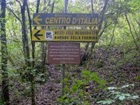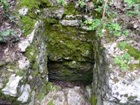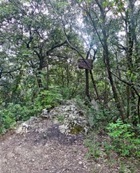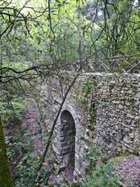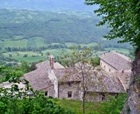

Walk from Narni Scalo
Take the bus from Piazza Garibaldi to the railway station at Narni Scalo. Until 1945, this was the industrial area of Narni, but it has since become a thriving residential area.
The interesting church of Santa Maria del Piano, which is now the cemetery church, is only open for Mass once a month. If you decide to visit it, walk from the station to the main road and then turn left. The road to the right, opposite the A&O Supermarket, leads to the church and cemetery.
Retrace your steps to the main road and continue straight across the crossroads. Turn left at the end of the road: Santa Maria del Ponte is immediately on the right.
Retrace your steps a little way to the junction, and then continue straight ahead to rejoin the main road nearer to Narni. Turn left through the road tunnel and then continue along the road, which crosses the railway line and then the river. There is a nice view of the Ponte di Augusto below, with Santa Maria del Ponte behind you. To get down to the bridge, walk down the stepped street on the left, just before the bar at Tre Ponte, and turn left at the bottom. The Emperor Augustus built this bridge to take the western branch of Via Flaminia across the Nera and on to Bevagna.
Retrace your steps a little way and then turn left over the river. This footbridge replaced a medieval bridge that was used when the Roman bridge became unusable. (This was possibly the site of a bridge that took the eastern branch of Via Flaminia across the Nera before the construction of the Ponte di Augusto).
There is a nice view of the Abbazia di San Cassiano through the arch of Ponte di Augusto from the footbridge. The abbey is closed, but if you decide to visit it anyway, the path is signposted from the junction ahead. It runs left between the railway line and the river, passing the remains of the fallen arches of Ponte di Augusto on the left, and then across a car park before winding up through the woods to the abbey.
Return to Tre Ponte and cross the main road.
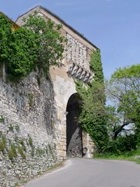
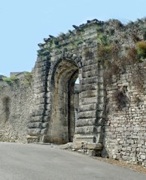
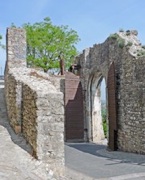
Continue and walk through Porta della Fiera (1556-9), which was built after the destruction of 1527 to a design by the Florentine Nanni di Baccio Bigio (born Giovanni di Bartolommeo Lippi). The wooden doors can still be seen on the inside. The nearby churches of San Vittore and San Savino were demolished.
Walk through the gate and continue along Via Gattamelata to Piazza Garibaldi, where the walk ends. (For the precise route, see Walk I).
Drive to the Sacro Speco di Sant’ Urbano
The return journey to the Franciscan hermitage known as the Sacro Speco di Sant’ Urbano, via the Roman Ponte Cardona, is some 25 km long (35 minutes driving time). However, if you just want to visit the Roman bridge, it is a nice walk - see the detour at the end of Walk II.
If you are driving, leave Narni at Porta Ternana, along Via Roma. Turn right at SP20 for Sant' Urbano.
Take a short detour right along Strada dei Pini and leave the car at the car park beyond the restaurant "Il Montagnone" (which is now closed) in order to begin the walk to Ponte Cardona (see below).
Walk to Ponte Cardona
